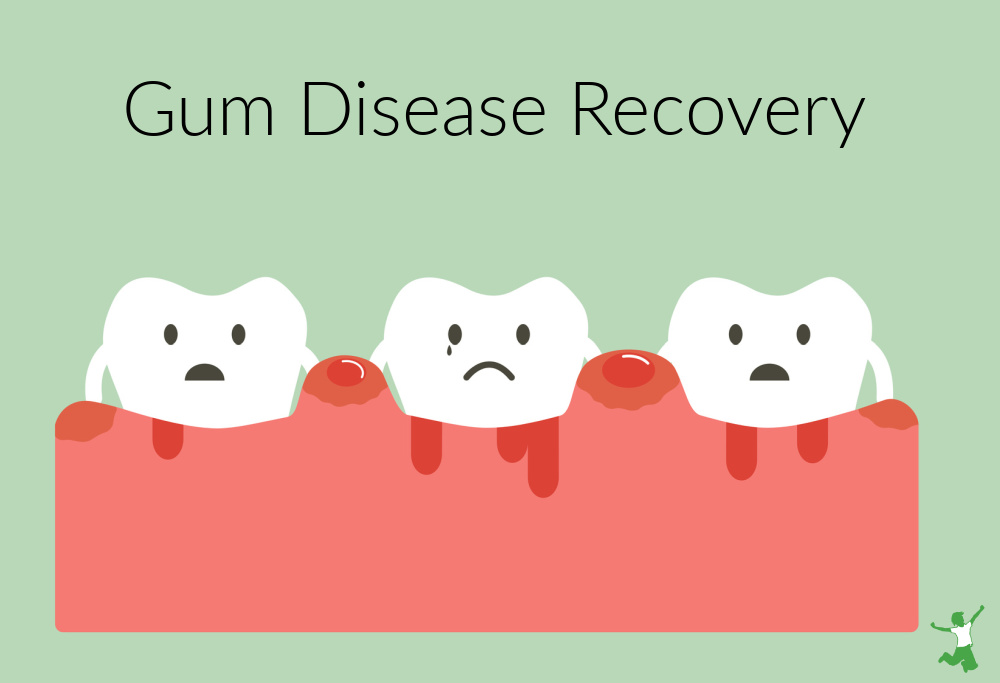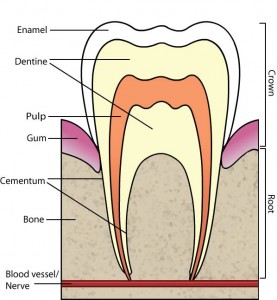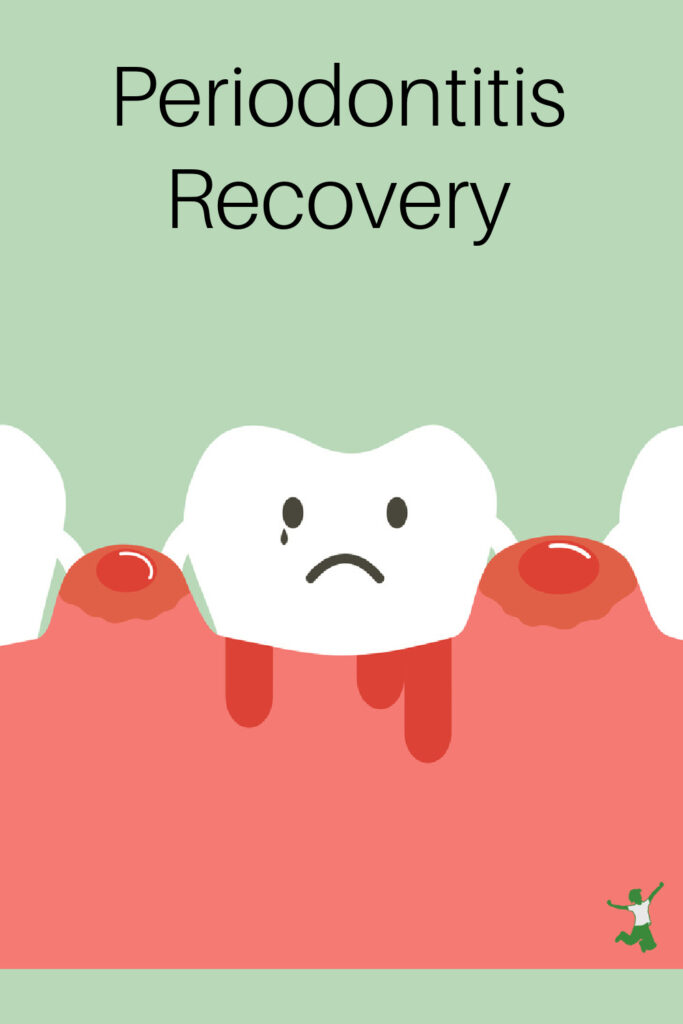Natural dental health expert Will Revak examines how a key traditional food is required for recovery from periodontitis and yet is often overlooked by those seeking holistic approaches to optimal oral health.

Before an in-depth discussion of how consuming traditionally prepared bone broths supports our oral health in such a foundational way, we need to set a baseline to understand just how common oral health issues are.
Let’s dive right in!
Sobering Statistics about Periodontitis
Let’s cover the “bad news” first because contained within the “bad news” are clues and gems of wisdom on how to create the “good news” of improved oral health in our own lives and that of loved ones.
- 9 out of 10 adults at age 30 already have some stage of active gum disease.
- 65% of 15 year olds are already showing the beginning signs of gum disease.
- 92% of adults have tooth decay (National Institute of Dental and Craniofacial Research).
The results, unfortunately, go well beyond a pretty smile.
- Loss of teeth (1 in 3 65 year olds has no natural teeth left in their mouth).
- The breakdown in health results in the loss of the ability to properly chew food.
- Cost of dental insurance throughout the life of an average person.
- Huge implications and potential causal factors of oral disease in other systemic diseases including heart disease, cancer, diabetes, arthritis, and the list goes on and on.
If these sad statistics are correct, which unfortunately they are, most of us are going to personally experience this breakdown in our oral health which will significantly impact our general health and our ability to live a full life.
However, a close look at these issues can illuminate some gems on how we can take the road less traveled and navigate to greater oral health.
Before we get into the “good news”, let’s spend a moment understanding the two main issues here, tooth decay and gum disease.
This will allow us to fully grasp the significance of how bone broths support greater oral health for a lifetime.
The Link Between Cavities and Gum Disease
Tooth decay and gum disease are fundamentally the same issue.
Both involve a breakdown and loss of bone tissue and connective tissue.
Most people realize that tooth decay is a bone loss issue. However, gum disease also involves bone loss.
You see, as gum disease progresses, the bone that acts as a foundation for our teeth breaks down. Lacking a foundation over time, the teeth simply fall out.
Gum disease is the #1 reason for adult tooth loss!

In addition, both tooth decay and gum disease involve the breakdown of the connective tissue in the mouth.
In the diagram above, you can see that the center chamber of each tooth is filled with pulp, which is nerves, blood vessels, and (mostly) connective tissue.
Moreover, each tooth is anchored to the jaw bone foundation by a ligament (connective tissue).
If you think about it, bone never directly connects to other bones in the body.
There has to be connective tissue to connect (redundancy intended) to the bones.
The gum tissue really functions as an interface between the teeth and jaw bones as well as the mechanism to support the region by circulating fluids in the area.
With this baseline in place, the question is how to best support and enhance the body to create and maintain greater bone and connective tissue health.
Folk medicine is a really condescending way of referring to how our ancestors successfully organized and kept themselves alive on a planet where the only constant was change.
Interestingly, many of our ancestors showed an expression of vitality and vigor that is becoming less and less common in our times.
Well, folk medicine has long understood the concept of “like supports like”. In other words, when we consume a specific part of the body of an animal, we support that same part of our body.
Thankfully, we don’t have to eat cow teeth in order to support our oral health!
But the principle that the bone and connective tissues in the body of an animal provide our own bones and connective tissues with the specific nutrients they need to grow strong and maintain health over time rings true.
Modern nutritional science substantiates what our ancestors understood through instinct and observation.
Keeping it simple, our bones and therefore teeth are mostly built from calcium and phosphorus, among other minerals.
A major component of our connective tissues is collagen. One of the beneficial aspects of collagen are a group of nutrients called glycosaminoglycans (GAGs for short).
Anyone who has spent some time in a supplement section knows a few popular GAGs, glucosamine, chondroitin, and hyaluronic acid.
GAGs are crucial for supporting greater connective tissue health.
In fact, they are prized as “youth serums” for their ability to help the joints feel soft and the skin remain firm and even in tone (all connective tissue support).
The question is how do we get these beneficial minerals and nutrients into our systems in a highly bio-available form?
Bone Broth: Raw Materials for Gum Health
The answer is traditionally prepared bone broths!
It is important to note that organic broth from the store is no substitute.
If you want the quality necessary to heal, you really should make it yourself!
If you think about it for a moment, slowly cooking bones, particularly joint bones, gives the bone and connective tissues in the pot time to break down into the stock water.
The result is the perfect balance of minerals that are easily absorbed by the body to support bone health.
In addition, the broth includes copious amounts of collagen for connective tissue health as well as healthy fats from the marrow to make all the above more bioavailable.
Mineral supplements will not provide the same easily absorbed, colloidal minerals as a properly prepared bone broth!
While this may not sound particularly mouth-watering described this way, it’s precisely this process that not only makes any soup way more nutritious but also much more flavorful and delicious.
Think Grandma’s soup, and if you didn’t have a Grandma who made soup like this, all the more reason you have to for the health of your family!
It’s really so simple, which is perhaps why it is often overlooked.
You can use bones from any animal you feel comfortable eating. This can range from beef and chicken to turkey, duck, fish, bison, deer, lamb…you fill in the blank.
Wild caught from clean areas would be optimal for their greater diversity in diet.
Where to find? Many of us simply go to our local butcher and ask for meaty joints and marrow bones for stew.
Be sure the animals are pasture-raised. Again, following the “like supports like” idea, how are we supposed to live healthy lives eating unhealthy animals?
Use bone broth as a base for soups, add it to beans or rice while cooking them, and have a warm cup in the morning (really!).
Here are a few delicious recipes that incorporate bone broth for breakfast.
There are so many ways to enjoy this delicious, nutritious bounty from nature that will help keep your teeth and gums strong for your entire life!
The question you are faced with now is if you are willing to take the road less traveled today and follow the path our ancestors clearly showed us was the way to creating and sustaining greater health (including oral health) or continue to follow our modern culture in its nutritional trainwreck.
I’ll see you at the butcher!









Leave a Reply